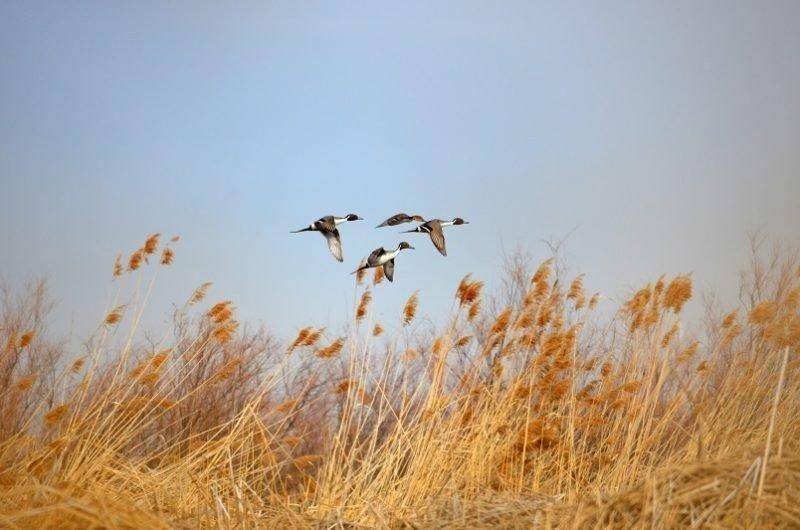DWR Press Release
DWR recommends changes for 2017 – 2018 waterfowl hunt
Splitting Utah into two duck hunting zones, reducing the number of pintail ducks hunters can take and establishing a waterfowl rest area at the Ogden Bay Waterfowl Management Area are among changes Division of Wildlife Resources biologists are recommending for Utah’s 2017 – 2018 waterfowl hunt.
You can see all of the changes biologists are recommending at www.wildlife.utah.gov/public_meetings.
Learn more, share your ideas
After you’ve reviewed the ideas at www.wildlife.utah.gov/public_meetings, you can let your Regional Advisory Council members know your thoughts by attending your upcoming RAC meeting or by sending an email to them.
RAC chairmen will share the input they receive with members of the Utah Wildlife Board. The board will meet in Salt Lake City on Jan. 3, 2017 to approve rules for Utah’s 2017 – 2018 waterfowl hunting season.
Dates, times and locations for the RAC meetings are as follows:
Central Region
Dec. 6
6:30 p.m.
Springville Civic Center
110 S. Main St.
Springville
Northern Region
Dec. 7
6 p.m.
Brigham City Community Center
24 N. 300 W.
Brigham City
Southern Region
Dec. 13
5 p.m.
Sevier School District Office
180 E. 600 N.
Richfield
Southeastern Region
Dec. 14
6:30 p.m.
John Wesley Powell Museum
1765 E. Main St.
Green River
Northeastern Region
Dec. 15
6:30 p.m.
DWR Northeastern Region Office
318 N. Vernal Ave.
Vernal
You can also provide your comments to your RAC via email. Email addresses for your RAC members are available at www.wildlife.utah.gov/dwr/rac-members.html.
The group each RAC member represents (sportsman, non-consumptive, etc.) is listed under each person’s email address. You should direct your email to the people on the RAC who represent your interest.
Two duck hunting zones
One proposed change should be a win-win for hunters in the southern part of the state. And hunters outside of southern Utah, who are willing to travel a bit, should benefit too.
Biologists want to create two duck hunting zones in Utah. During the 2017 – 2018 season, the hunt in the North Zone would run Oct. 7 – Jan. 20. The hunt in the South Zone would run Oct. 14 – Jan. 27.
Blair Stringham, migratory game bird coordinator for the DWR, says having two zones would benefit hunters several ways. They include the following:
· Over the past few years, warm weather in northern Utah has kept birds from migrating to southern Utah during the early part of the season. Waiting until mid-October to start the duck hunt in the South Zone, and then not ending it until the end of January, should provide hunters in southern Utah with better hunting.
· Hunters who live outside of southern Utah would benefit too. If you’re willing to travel, you could enjoy an extra week of duck hunting by traveling to the South Zone after the hunt in the North Zone closes.
· Having two duck zones would allow the DWR to offer two Youth Waterfowl Hunting Days, one in each zone. The youth hunt in the North Zone would happen Sept. 23. In the South Zone, the hunt would happen Sept. 30.
Reduced pintail limit
During surveys flown over North American breeding and nesting areas this past spring, biologists with the U.S. Fish and Wildlife Service saw 14 percent fewer pintail ducks than they did during surveys in spring 2015. To give pintails more protection, DWR biologists are recommending that hunters be allowed to take only one pintail a day. Over the past few years, Utah hunters have been allowed to take two pintails a day.
Rest area at Ogden Bay
Another change should make waterfowl hunting better at the Ogden Bay Waterfowl Management Area. Biologists would like to establish a waterfowl rest area at the WMA west of Hooper. The area, which would be closed to hunting, would be just west of the headquarters building.
Stringham says rest areas make hunting better by keeping birds in an area longer.
“Rest areas are great for hunting,” he says. “They keep birds in areas the birds would normally leave because of hunting pressure. After congregating on a rest area, the birds will fly from the rest area to other areas on a WMA. And that’s when hunters can take them.”

